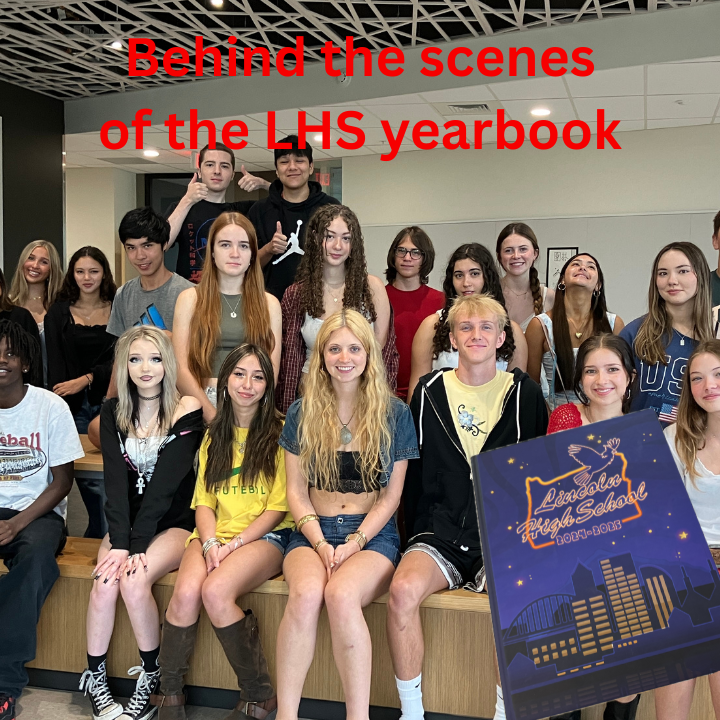Species Spotlight: Top 10 cryptids of the Pacific Northwest
January 5, 2022
The Pacific Northwest is a beautiful place to live. Our wilderness invites a sense of adventure and wonder, hiding so many things that are yet to be discovered. In the fourth installment of the Cardinal Times’ Species Spotlight, we look at a more mysterious part of our corner of the country: cryptids.
According to Merriam Webster, a cryptid is “an animal (such as Sasquatch or the Loch Ness Monster) that has been claimed to exist but never proven to exist.” This article will be ranking the Pacific Northwest’s top 10 cryptids from 10 (worst) to 1 (best).
- Devil’s Lake Monster
The Devil’s Lake Monster, also known as M’de Wakan, is a creature with a cultural story from the Nakota Sioux. It is a giant squid-like monster that sinks ships that travel on Devil’s Lake in Lincoln County, Ore. In 1950, the beast was allegedly found, and for some reason was really hairy. I have two big issues with the M’de Wakan. First, it is a hairy Lake Monster with big tentacles, so it is effectively a glorified mop head. Second, it’s only feared because it sank one canoe with seven people on it 100+ years ago. Those are rookie numbers, and, frankly, not worth anything above 10th place.
- Ball-Tailed Cat
The Ball-Tailed Cat is a lumberjack legend. It’s a large, aggressive cat with a heavy rock-like mass at the end of its tail. It has long claws that it uses to climb trees, where it sits around waiting for unsuspecting lumberjacks so that it can jump down and attack them with its tail ball. I put this cryptid pretty low on the list because it’s pretty basic. There isn’t anything wrong with it, but there isn’t anything right about a cat with a rock on its tail either.
- Wallowa Lake Monster
The Wallowa Lake Monster is kind of a weird cryptid. It comes from a Native American cultural story and was claimed to have been first seen when it killed the daughter and son of the chiefs of two warring tribes. Most of the creatures on this list have a somewhat defined set of characteristics. The Wallowa Lake Monster, however, has a long, snakelike body (which has been said to be 10, 20 or 100 feet long), a head resembling a hippo (but maybe more like a hog head), and has been argued to be two different monsters (but in the original Native American story it was only one). This cryptid is confusing, and if it weren’t for the fact that its origin story is the ending to Romeo and Juliet that we all deserved, then it would be at the bottom of the list.
- Colossal Claude
Colossal Claude is more than a funny name. Also called “Marvin the Monster,” this big guy is effectively a giant seahorse. With a 40-foot long body and a thin, horse-like head, this Columbia River dweller is certainly a strange sight. Claude was claimed to have been spotted by Shell Oil Company in 1963 swimming in corkscrews 180 feet under the water. Claude’s ingenious name and his ability to swim so deep underwater carry him to number seven on the list.
- Sasquatch
Sasquatch is overhyped; that’s a fact. It’s a weird gorilla, and there is absolutely no reason the Pacific Northwest should be this excited about this cryptid. There is no reason that we need TV shows about hunting it, and no reason why it has become the symbol of our corner of the country. Of course, I respect the grind of Bigfoot’s PR team (because getting a monkey in the woods to become a recognizable figure across the country is quite the feat), but I sadly can’t justify giving it anything higher than sixth.
- Black-Eyed Children
Black-Eyed Children are easily the funniest cryptid on the list. They are children, usually ages 6-16, who have pitch-black eyes. They approach their victim asking for simple favors (food, money, etc.), and then the victim suddenly feels sick with dread and despair. The best part is that the Black-Eyed Children don’t do anything after they approach someone. They just give off the most wretched of vibes, and then leave.
- Amhuluk
Amhuluk comes from a cultural story from the Kalapuya First Nations People about a dragon that is connected to water, with its favorite pastime being drowning people and things. Amhuluk was also in Godzilla: King of Monsters, making it by far the coolest movie star in Oregon. Amhuluk is certifiably very awesome on many counts and has earned its spot on the list.
- Giant Saltwater Crustaceans
Giant crabs! These saltwater crustaceans are a breed of colossally sized crabs that live around Wallowa Lake, one mile south of Joseph, Ore. They were claimed to have originally been spotted by pioneers, and are speculated to have moved to remote areas of the Oregon Coast. In summation, giant crabs are dangerous and funky fresh (or rather salty), easily making it to third place on the list.
- Thunderbird
Thunderbirds are giant birds hailing from many Native American cultural stories all across the Pacific Northwest (with reports of sighting even up in parts of Canada). These giant winged beasts are said to flap their wings so hard that thunder strikes, lightning flashes from their eyes and rain falls from their back. They are claimed to have helped First Nations people in times of need, and their eggs were what is now labelled “thunderstones” (the igneous rock). These giant birds of prey are gorgeous and powerful, making this number two pick very simple.
- Gumberoo
The Gumberoo comes from an old lumberjack tale about a giant bear. It has no fur, leathery skin that is supposedly immune to bullets, rows and rows of razor-sharp teeth and lives in the hollowed-out trunks of burned-down trees. It is hungry for anything that looks like food, and it is never full. The only way to kill a Gumberoo is with fire, but when a human inhales the smoke after burning the Gumberoo ,their organs get coated with rubber. This is easily the most fearsome cryptid on the list—the absolute pinnacle of predator design: beautifully terrifying in every way.
Oregon has some pretty interesting things lurking around in it. At the end of each installment of Species Spotlight, I usually tell you to go out and explore to try and find cool new things in nature. Here, however, I feel you should stick to reading about these species. Stay safe out there.





wyatt • Apr 8, 2024 at 3:14 pm
wow this is great
TIMMY • Mar 2, 2023 at 12:47 pm
TIMMY
Shirley • Nov 30, 2022 at 12:54 am
I’ve seen a Thunderbird in the Blue Mts. It was huge and gliding above the trees quietly. We hid in the brush.
Tony G • Jan 6, 2022 at 9:16 pm
Don’t hate on my boy Sasquatch like that! It’s no “weird gorilla” it’s the coolest creature to ever be thunk up
Danica • Jan 5, 2022 at 9:55 pm
“They just give off the most wretched of vibes, and then leave” is the most iconic line I have ever read. Very disappointed that the Black-Eyed Children are not number one on this list however, since it is easily more fearsome than any “Gumberoo”. What is more terrifying than the lingering, ever-present sensation of being a disappointment to others? I would much rather let my organs disintegrate.
Sam • Jan 5, 2022 at 4:39 pm
Black-Eyed Children are most terrifying: ‘the victim suddenly feels sick with dread and despair’. I wonder how long the feeling lasts? I’m really worried that it’s forever.
Lia Godino • Jan 5, 2022 at 4:08 pm
Owen Adam’s does it again! This article was both well written and humorous. My one qualm is that the Thunderbird should have been first. Oh well. Maybe mushrooms next?
Eden • Jan 19, 2022 at 1:36 pm
Owen Adams should absolutely do top 10 mushrooms. The orange witches’ broom mushroom should come in first place.
siwi ? • Jan 5, 2022 at 3:39 pm
nessy ?
Julian • Jan 5, 2022 at 3:35 pm
Hot take: the ball tailed cat is underrated
Leo Westrey • Jan 5, 2022 at 4:03 pm
I agree
Sam • Jan 5, 2022 at 4:28 pm
Totally agree – ball tailed cat is pretty terrifying and should be higher in the list.
Anabelle stephens • Oct 9, 2024 at 3:34 pm
The ball-tailed cat is a fearsome critter of North American folklore most commonly described as having similar traits to that of a mountain lion, except with an exceedingly long tail to which there is affixed a solid, bulbous mass for striking its prey.